The euro rose for the first time in three days against the dollar before a report forecast to show German investor confidence improved this month, easing concern the global economic recovery will stall.
The 16-nation currency gained the most in more than a week versus the yen as economists estimated sentiment climbed to a three-year high in Europe’s largest economy. The yen fell against all 16 major counterparts on speculation Japanese importers took advantage of its strength to sell the currency. The dollar ended two days of gains versus Australia’s currency before a U.S. report forecast to show July housing starts rose.
“Because Germany is a manufacturing hub, it’s a good barometer for what’s happening in the global economy,” said Jonathan Cavenagh, a currency strategist at Westpac Banking Corp. in Sydney. “The euro will receive some benefit from it.”
The euro rose to $1.4115 at 6:58 a.m. in London from $1.4082 in New York yesterday, when it touched $1.4046, the lowest level since July 30. It advanced 0.7 percent, the most since Aug. 7, to 134.05 yen from 133.08 yen. The euro bought 86.16 British pence from 86.15 pence.
The yen weakened to 94.96 per dollar from 94.50 in New York yesterday, when it reached 94.21, the strongest level since July 29. The currency dropped 0.9 percent to 78.27 versus Australia’s dollar and fell 0.8 percent to 63.62 for each New Zealand dollar.
Germany’s Economy
Europe’s single currency rebounded from a two-day decline versus the U.S. dollar as doubts eased about the economic recovery in the 16-nation area.
The ZEW Center for European Economic Research will say its index of investor and analyst expectations rose to 45 from 39.5 in July, according to the median of 35 forecasts in a Bloomberg News survey. That would be the highest reading since May 2006. ZEW releases the report, which aims to predict developments six months ahead, at 11 a.m. in Mannheim today.
Germany’s economy grew 0.3 percent in the second quarter from the first, bringing a halt to the worst recession since World War II sooner than forecasters had expected, a report showed last week.
The European Central Bank this month kept its benchmark interest rate unchanged at 1 percent. ECB President Jean-Claude Trichet said after the Aug. 6 meeting that there are “clearly less negative” economic signs.
The yen declined from near a two-week high versus the dollar on speculation Japanese importers sold the currency and as technical charts signaled its 1.2 percent gain in the past five days was excessive.
Yen Correction
“The yen’s recent rise was rapid, so there’s probably a correction occurring,” said Nobuaki Kubo, vice president of foreign exchange in Tokyo at BBH Investment Services Inc., a unit of New York-based Brown Brothers Harriman & Co. “It’s also likely that importers would sell yen at these levels.”
The dollar’s 14-day stochastic oscillator against the yen was at 12.9 yesterday, below the 20 threshold that indicates an asset price may have fallen too fast and is poised to gain. In technical analysis, investors and analysts study charts of trading patterns and prices to forecast changes in an asset’s value.
Japan’s currency also weakened amid speculation investors sold the yen to purchase higher-yielding assets elsewhere.
“There’s talk that Japanese insurers and securities firms are selling the yen,” said Takashi Kudo, director of foreign- exchange sales at NTT SmartTrade Inc., a unit of Nippon Telegraph & Telephone Corp. “They may be seeking higher returns abroad.”
China Stocks
The benchmark interest rate is 0.1 percent in Japan, compared with 3 percent in Australia and 2.5 percent in New Zealand, making the South Pacific nations’ assets attractive to investors.
Losses in the yen were limited as a drop in China’s stocks boosted demand for the currency as a refuge.
The Shanghai Composite Index, which tracks the bigger of China’s stock exchanges, dropped 0.3 percent, extending its losing streak into a third day. The index has declined 18 percent from this year’s high on Aug. 4 on concern a slump in exports and new loans will hamper economic growth.
“Falling stocks in China are the only reason” the yen is being bought as a refuge, said Akira Hoshino, chief manager of the foreign-exchange trading department in Tokyo at Bank of Tokyo-Mitsubishi UFJ Ltd., a unit of Japan’s largest lender by market value. “It’s hard to estimate when stocks will reach a bottom, as they’ve been sold consistently.”
U.S. Housing Starts
The U.S. dollar fell 0.5 percent to 82.47 cents per the Australian dollar before the Commerce Department reports housing data today in Washington. U.S. housing starts rose to an annual rate of 598,000, the highest level since November, from a 582,000 pace in June, a Bloomberg survey showed.
“A positive number will add to signs the U.S. housing market is bottoming out,” said Masashi Hashimoto, a senior analyst at Bank of Tokyo-Mitsubishi UFJ Ltd. “That could cause the euro to be bought, leading to a drop in the dollar and the yen in the short-term.”
The Dollar Index, which the ICE uses to track the dollar against currencies of six major U.S. trading partners such as the euro and the yen, declined to 79.175 from 79.318 yesterday.
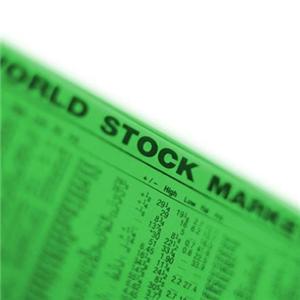 Market Round Up- The Sensex gained 203 points and closed above the 15K mark. Positive global cues helped the markets to stay on the higher side throughout the day. The NSE Nifty went up 1.35% or 59 points to settle at 4453 after trading in the range of 4492-4394. Today's rally was led by gains in auto, banking, power and IT stocks. The market breadth was positive but the volumes were very lower.
Market Round Up- The Sensex gained 203 points and closed above the 15K mark. Positive global cues helped the markets to stay on the higher side throughout the day. The NSE Nifty went up 1.35% or 59 points to settle at 4453 after trading in the range of 4492-4394. Today's rally was led by gains in auto, banking, power and IT stocks. The market breadth was positive but the volumes were very lower. 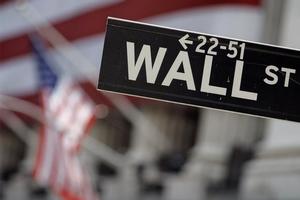 New York - US stocks rose sharply Thursday, after ailing insurer American International Group Inc (AIG) suggested it would be repaying its government loans and economic indicators again signalled the recession is easing.
New York - US stocks rose sharply Thursday, after ailing insurer American International Group Inc (AIG) suggested it would be repaying its government loans and economic indicators again signalled the recession is easing.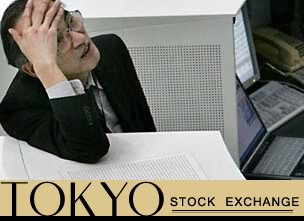 Tokyo - Tokyo stocks fell Friday as the yen's advance against the US dollar led investors to sell mainly export-oriented issues.
Tokyo - Tokyo stocks fell Friday as the yen's advance against the US dollar led investors to sell mainly export-oriented issues.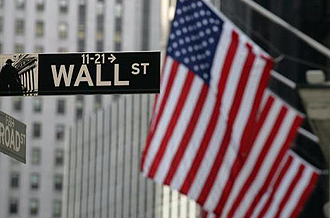 New York - US stocks rose sharply Friday, capping a positive week of economic and housing sector news, while the price of oil briefly reached a new high for the year.
New York - US stocks rose sharply Friday, capping a positive week of economic and housing sector news, while the price of oil briefly reached a new high for the year.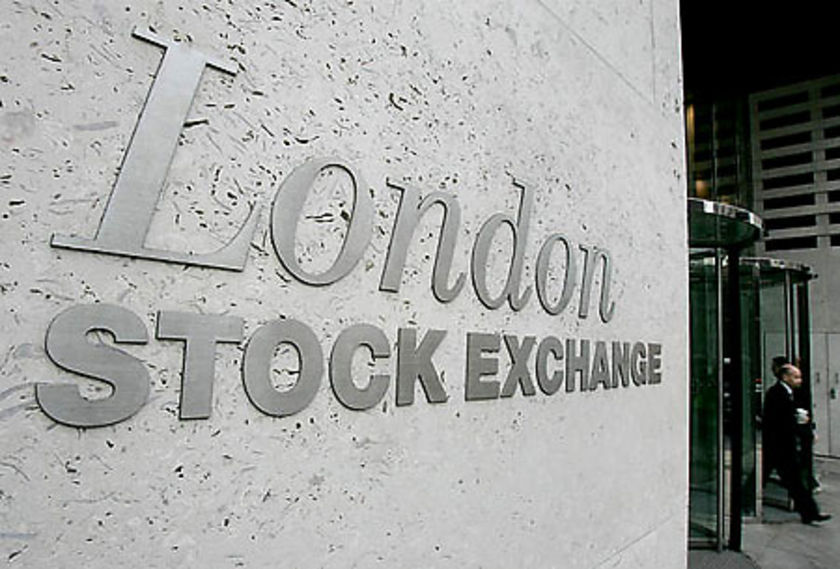
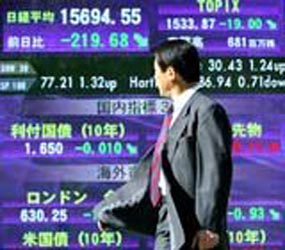
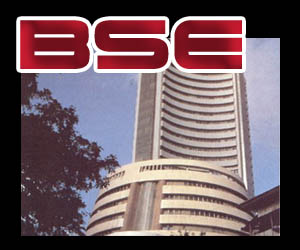 The markets are giving a strong evidence of a intermediate rally if nifty maintain above 4480. As we were mentioning that 4580 is the level to be watched carefully as markets have corrected very sharply from that point. The outlook still remains cautious as the markets have once again given a breakout on the higher side. Now going forward its necessary that nifty maintains above the 4600 level for some time and consolidates before heading for a of 4880.
The markets are giving a strong evidence of a intermediate rally if nifty maintain above 4480. As we were mentioning that 4580 is the level to be watched carefully as markets have corrected very sharply from that point. The outlook still remains cautious as the markets have once again given a breakout on the higher side. Now going forward its necessary that nifty maintains above the 4600 level for some time and consolidates before heading for a of 4880.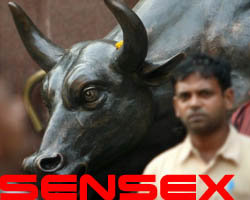 Asian stocks rose, led by commodities producers, as copper and oil prices increased and sales of existing homes in the U. S. surged the most on record, fueling speculation a global economic recovery is strengthening. BHP added 4.1 % to A$38.11 after copper futures climbed 5.1 % in New York on Aug. 21, the steepest gain since June 1. The MSCI Asia Pacific Index rose 2.1 % to 112.37 as of 10:33 a. m. in Tokyo, with about 14 times as many stocks gaining as retreating. All 10 industry groups climbed, led by materials producers.
Asian stocks rose, led by commodities producers, as copper and oil prices increased and sales of existing homes in the U. S. surged the most on record, fueling speculation a global economic recovery is strengthening. BHP added 4.1 % to A$38.11 after copper futures climbed 5.1 % in New York on Aug. 21, the steepest gain since June 1. The MSCI Asia Pacific Index rose 2.1 % to 112.37 as of 10:33 a. m. in Tokyo, with about 14 times as many stocks gaining as retreating. All 10 industry groups climbed, led by materials producers.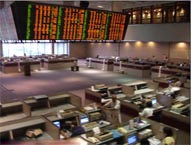 Manila - Philippine share prices soared 5.11 per cent Monday on expectations that the local economy was on the road to recovery from the global financial crisis.
Manila - Philippine share prices soared 5.11 per cent Monday on expectations that the local economy was on the road to recovery from the global financial crisis.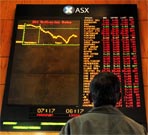
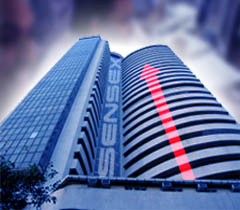 Mumbai, Aug 24 : The Bombay Stock Exchange’s benchmark 30 share Sensex rose by 289 points in early trade on Monday, extending its gaining streak for the third session in a row.
Mumbai, Aug 24 : The Bombay Stock Exchange’s benchmark 30 share Sensex rose by 289 points in early trade on Monday, extending its gaining streak for the third session in a row.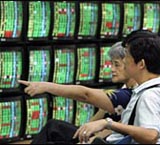 Taipei - Taiwan stocks closed 2.76 per cent higher on Monday, bolstered by a strong rebound in the US, Europe and across Asia, dealers said.
Taipei - Taiwan stocks closed 2.76 per cent higher on Monday, bolstered by a strong rebound in the US, Europe and across Asia, dealers said.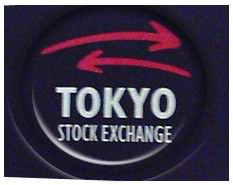 Tokyo - The Tokyo market ended morning trading lower Tuesday as investors sold shares to lock in profits from the previous day's gains.
Tokyo - The Tokyo market ended morning trading lower Tuesday as investors sold shares to lock in profits from the previous day's gains.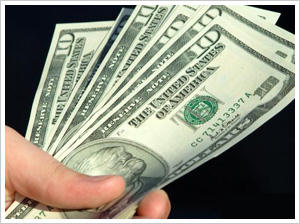
 March will be our last meeting of the year. We have had only 15 renewals and the board decided to suspend operation for the rest of the year. The Oakland REIA has started a group for advanced investors and I am encouraging all DOLLARS members who want to meet with experienced investors to give the Oakland Group a try. They are just starting up their advanced sub group so in all fairness we should give them a couple months and see if it is a forum that our members enjoy. Since DOLLARS is suspending they will be meeting on the 3rd Thursday of the month. Check out their web site at REIA of Oakland.com.
March will be our last meeting of the year. We have had only 15 renewals and the board decided to suspend operation for the rest of the year. The Oakland REIA has started a group for advanced investors and I am encouraging all DOLLARS members who want to meet with experienced investors to give the Oakland Group a try. They are just starting up their advanced sub group so in all fairness we should give them a couple months and see if it is a forum that our members enjoy. Since DOLLARS is suspending they will be meeting on the 3rd Thursday of the month. Check out their web site at REIA of Oakland.com.





